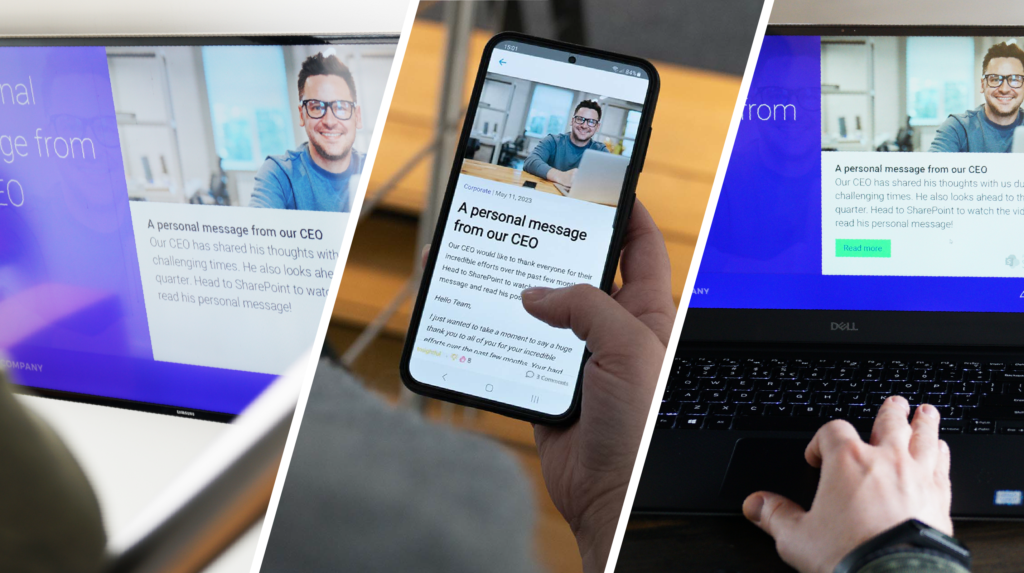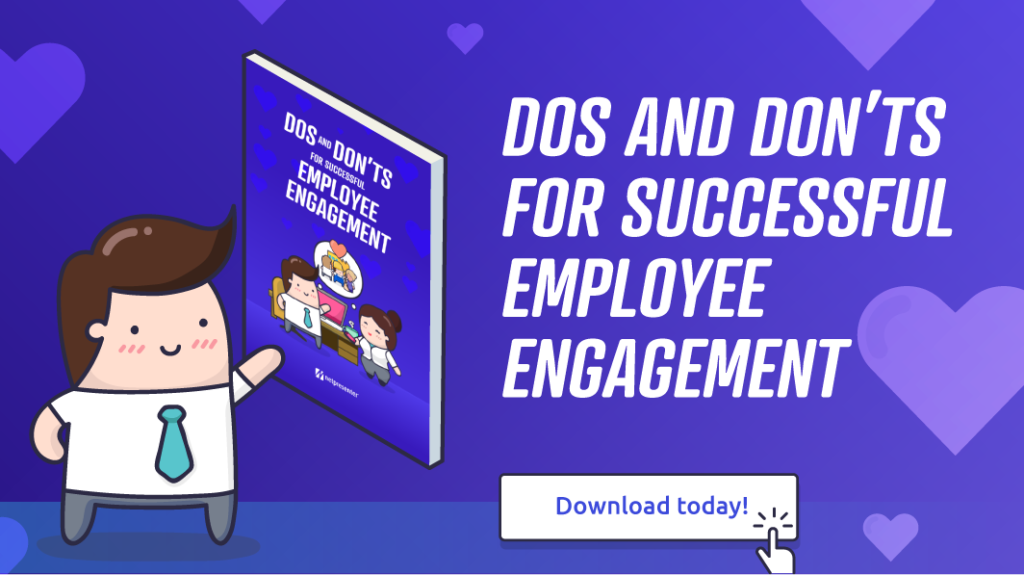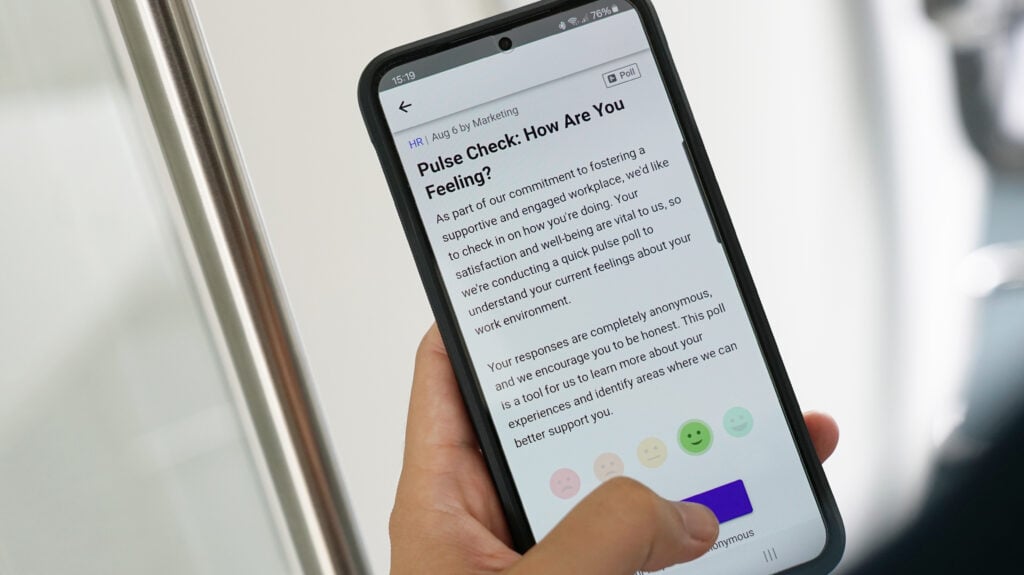6 Proven Strategies to Increase Employee Engagement
Estimated reading time: 6 minutes
Employee engagement is under pressure. And that has direct consequences for productivity within your organization. According to Gallup’s latest State of the Global Workplace report, global employee engagement dropped from 23% to 21% in 2024. The result: an estimated loss of $438 billion in productivity. These are not statistics to ignore – this is a wake-up call. Time to turn the tide. The key question: how do we increase employee engagement?
The answer lies in communication. Engagement is not just about what we say, but also how, when, and through which channels we communicate. Below are six concrete communication shifts that HR professionals can implement today to increase engagement.
Table of contents
1. Reach Employees Where They Are
Everyone communicates differently, depending on their workplace and the devices they use. Whether someone works in an office, on a factory floor, or from home, it’s essential that communication is always and everywhere accessible. According to Gallup, 22% of employees worldwide feel lonely. For remote workers, that rises to 27%.
An omnichannel communication strategy helps address this. By spreading messages across multiple channels, you ensure that everyone is reached – even those without PC access. Think of Digital Signage screens in canteens, Corporate Screensavers at pcs, and updates via an employee app on mobile phones. This way, no one is left out, everyone stays informed, and employees feel more engaged.

2. Create an Active Communication Culture
Internal communication often feels like a one-way street: management shares updates, and employees absorb them. That’s uninspiring and creates a sense of distance. Employees want more than just corporate announcements; they seek communication that connects and resonates.
An active communication culture where everyone can share content makes a big difference. These can be work-related updates, but also informal or personal messages shared by various colleagues. Think of a recap of a successful client visit, a colleague being highlighted in a fun way, or travel photos from a team member. Assigning local content creators within teams or departments to share context-specific updates keeps communication relevant, varied, and relatable – regardless of workplace. As you can imagine, this has a positive impact on employee engagement.
3. Make Business Results and Performance Transparent
When employees have no visibility into how their work contributes to broader organizational goals, their work can quickly feel dull or meaningless. That missing link often leads to reduced engagement, lower productivity, and less job satisfaction. Transparency around business results and individual performance is a powerful remedy.
You can improve this by integrating data into employee communication. Real-time dashboards with, for example, production figures or customer satisfaction scores give employees direct insight into their impact. Additionally, recognizing performance visibly is motivating. It’s important that all screens are utilized so everyone – even those without PC access – can see the information. This way, all employees know their efforts are seen and appreciated.
Do’s and Don’ts for Successful Employee Engagement
Boosting employee engagement isn’t always easy, and even small missteps can have a big impact. Want to get it right? Our infographic highlights key Do’s and Don’ts for building an engaged workforce. Download it here and start increasing your employees’ engagement today!

4. Ensure a Varied Communication Mix
Sharing the same type of messages over and over doesn’t work. Too many serious updates can cause attention to fade, while an overload of light-hearted content can overshadow important messages and diminish the credibility of your communication. The key is to strike the right balance.
By alternating strategic updates, project milestones, and business announcements with informal messages—like birthdays or team activity photos—you keep communication interesting and accessible. Externally generated content, such as news or weather reports, can also be a valuable addition. This keeps your communication dynamic, relevant, and attractive to employees.
(!) The right balance between business-critical and light-hearted content is essential, as is the format in which you present it. Entertainment is the spice of engagement. That’s why infotainment—a format where information is presented in an entertaining way—deserves a key role in modern employee communication. Infotainment grabs attention and boosts the effectiveness of your messages. It ensures that employees not only stay informed but also enjoy consuming your content.
5. Make Communication Relevant
Information overload is one of the biggest challenges in employee communication nowadays. No one wants to be flooded with irrelevant messages. When messages aren’t relevant or don’t align with employees’ needs, they’re more likely to ignore communication altogether. The result? Engagement drops and the distance between employees and the organization grows.
Targeting is the solution. By tailoring messages based on location, department, or other relevant characteristics, employees only receive updates that matter to them. Think of factory workers seeing production deadlines on large screens, while office staff receive lunch menu updates via screensavers. This prevents information overload and ensures employees stay connected to communication and the organization.
(!) The trend of hyper-personalization ties in perfectly here. Just as social media algorithms tailor content to user preferences, employee communication can also be personalized. By adapting information to individual needs and contexts, communication becomes not only more effective but also more valuable.
6. Give Employees a Voice
Sharing information alone isn’t enough to boost engagement; it’s also about listening to employees. When they have no space to share opinions, voice concerns, etc., they don’t feel heard, valued, or engaged.
With interactive tools like polls, pulse surveys, and feedback buttons in employee apps, you can easily gauge what’s going on in your organization. By giving employees a voice and actually acting on their input, you show that their opinions matter. When they see that their feedback leads to tangible improvements, engagement grows organically.

Boost your employee engagement
Employee engagement isn’t something you boost once; it’s an ongoing process. As Gallup’s report shows, the cost of disengagement is simply too high to ignore. By reaching employees where they are, facilitating a content-creating community, ensuring transparency, mixing up communication formats, avoiding information overload, and giving employees a voice, organizations can build a more connected, engaged, and productive workforce.
Netpresenter is the platform that helps you achieve all of this. Curious how it can help you improve? Request a 30-minute demo for free or take a self-guided tour today!

